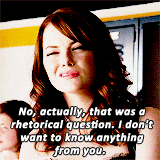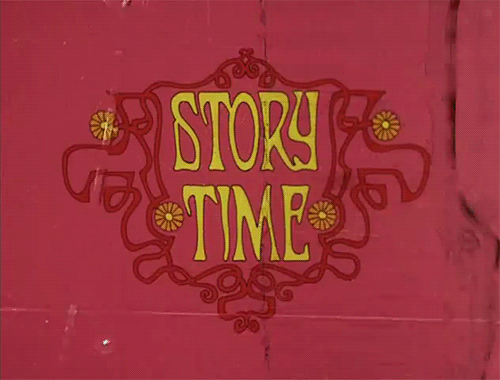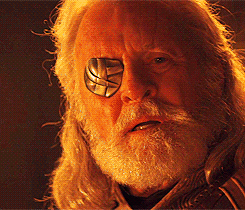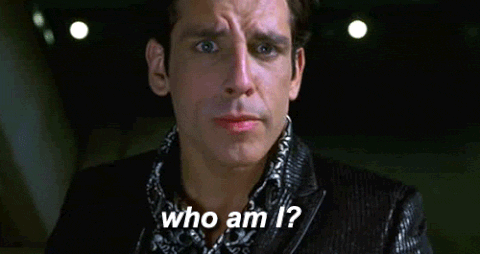Link
1 note
·
View note
Text
Database Project- Kaela
For both of my elaborations, I focused on a few female authors we have read by analyzing and comparing their pieces. I want to keep this general idea (focus on women) and do a broader comparison of their ideas, so for my database project I will be doing a ThingLink (or something similar), using some sort of iconic feminist movement picture as my base (picture is yet to be completely decided but I have a few in mind- potentially will be a picture of women marching) and annotating different parts of that picture with quotes and concepts from female authors we’ve read in the class. I don’t know if I’ll use every single one, but right now I’m thinking I’ll use at least Astell, Grimke, Willard, hooks, Cixous, and Hurston, and see how some of their concepts on women in rhetoric (and women in general) potentially line up with, or disagree with, each other and more contemporary feminist ideas that are present or implied in the picture.
0 notes
Text
0 notes
Text
day 13 (5.2)

today
annotation analysis
modder’s map 7
annotation articulation: rhetoric / situation/ heuristic
discuss database project
database brainstorm
for next time
due: database project (May 10)
0 notes
Text
Annotation Analysis (5.2)

As of noon today, here are the numbers:
Total Annotations: 199 (236 w/ replies)
Annotation By Reading
Edbauer: 106
Rickert: 51
Muckelbauer: 40
Boyle: 36
Arola and Arola: 3
Top Annotators
Jason: 56
Kathleen: 29
Abbey: 28
Top Replier
Abbey: 9
Semester Total: around 4,500 annotations
0 notes
Link
0 notes
Link
0 notes
Text
DataBase Project (Maggie)
With the end of the semester approaching, I have found it difficult to hone in on a single topic for my final database project. However, knowing the nature of this project and the interconnectedness of course concepts, I am reassured to select a topic of discussion without feeling as though I am shutting out a host of other important and fascinating concepts we have studied. After much thought, for my database project, I plan to build primarily off of my second elaboration, where I spoke at length about Bitzer’s “Rhetorical Situation” and the impact and greater implications context has on rhetorical situations. As a communication student, this topic sparked my interest immediately. In communication, we often hear the phrase, “context always matters.” However, differing viewpoints, such as that of Derrida, complicate this notion, adding to its complexity.
Diving deeper into a more in-depth analysis of context and how it relates to rhetoric and the other readings we have read this semester excites me. Although I am not sure what my end product will produce, I am looking forward to this process of thinking. When it comes to selecting a the format for my database project, I am inclined to rely on what I know best and most enjoy, which is a traditional paper. This paper will look similar to the Elaborations for this course, incorporating more, of course, and further developing thoughts and concepts.
0 notes
Text
Database Pitch (Kathleen)
MicroRespose #6 (5-2-19)
For my final database project, I am constructing what I call a “Roadmap of Rhetoric.” I will begin by building off of my initial MicroReponse, in which I attempted to answer the question, “What is rhetoric?” I then plan to deconstruct a portion of the readings we have read over the course of the semester, as a means to construct what it is that I understand rhetoric to be. Basing my thoughts off of the readings and fellow students’ MicroResponses and annotations, I plan to make sense of what it is that we’ve studied and discovered thus far. I will base my database project on the theme I have been inspired by the entire semester: Everything is built on something. Drawing namely on Siegert’s concept of cultural techniques and other related concepts, I hope to make sense of what rhetoric is through the process of (un)becoming.
As far as formatting, I have two ideas, and I am still not quite sure what form this database project will take. My first option would be to construct a traditional paper, following the format of my previous elaborations. I have enjoyed writing in the way of incorporating classmates’ ideas, and I may continue this in the final project. The other, and more adventurous, idea was inspired by the Martin O’Leary’s roadmap type of graphic we viewed in class. Using this concept, I would label the houses lining the roads as concepts, and use the author’s of the readings as street names to demonstrate the intersectional nature of the concepts, such as if certain author’s ideas parallel each other, clash or even produce a dead-end. The town or entity as a whole would make up what it is we know rhetoric to be, or not to be for that matter. Using the roadmap analogy, this could be written in a traditional paper form, which I described first, but it may be helpful to use a visual medium.
0 notes
Text
Some Proposals (Matt)
My first inclination in thinking through the database project is to bring together my previous two elaborations, which I imagined as two halves of a whole. Taken together, they move from considering the question “what is (the) human?” as a Baradian apparatus to thinking through the implications generated by the question, eventually leading to a method of dealing with the risk associated with posthuman thinking. The piece also serves as a method-example for how science fiction serves as an increasingly important framework from which to launch or interrogate posthuman futures; both rely heavily on the novels we’ve read in class, as well as incorporating several outside texts. This would in effect be a more traditional essay, though I feel the voice is more personal than academic, and I think it lends itself toward ambiguities/explorations over determinations.
Another option involves tracing Barad’s concept of the apparatus through our readings, annotations, microresponses, etc. Since we read her piece this idea has fascinated me, mostly because I think it’s an intriguing theoretical tool, but also because the implications are embedded in a material reality; in other words, while I’ve thought about the apparatus as a kind of discursive metaphor, Barad presents it as something fundamentally entangled with not only how we understand the world but how we make the world. As far as form/design for this version of the database project, I’m still thinking through the possibilities (I missed last week, so I’m not sure I understand fully the nature of the thing). I imagine an extended infographic could present the information in an efficient way.
A third option might involve tracing how Annihilation has frequently intersected with many of our readings in this class. I think you could build a compelling case-study for the text as an urgent and critical response to posthuman thinking and epistemology. It’d be a kind of small-scale version of a Norton Critical Edition, although consisting of material that doesn’t explicitly reference the novel and instead bringing together texts which enhance the reading experience by drawing attention to the kinds of questions and discourses Annihilation interacts with.
0 notes
Text
Database Proposal (Abbey)
For my database project, I’m going to use Siegert’s concept of cultural techniques and the film Mean Girls to explore what such a combination reveals about the styling of space. I will construct a Regina Georgeian Burn Book with photos of theorists that can map onto aspects of the film (including both the plot itself as well as the blocking of the scenes).

I expect Douglass, Derrida, Edbauer, and Corder will most prominently work with Siegert and Mean Girls, so I know that they will be featured in the Burn Book. I want to find a way to use Bitzer if only to include Ali’s incredible construction of Bitzer as The Situation, if at all possible.

More particularly, I’m going to read the cliques in the film as a cultural technique that styles and is styled as a function of absence.The cliques inra-act with various spatial arrangements in the film, such as the cafeteria and the gym, to work in a chain of operations with material discursive practices to define the different types of human in the school. My exploration, then, I think, works through the idea that a posthuman critique of cliques reveals something about how space works within rhetoric as a styling practice.
I imagine the content of the project being constructed through a live annotation of my viewing of Mean Girls. I’ll write down lines as I hear them and as they relate to specific theorists. I’ll tie them to quotations from theorists, annotations, and elaborations to construct pages that look like this:

I’ll have an introduction and conclusion that more academically works the concepts together. And, @sophistmonster has requested glitter. A lot of glitter.
0 notes
Text
Persona to Chimera and How Rhetoric Changes Us (Laura)
In my database project, I plan on working through (you guessed it) persona and the changes it prompts us to make. This will essentially piece together my two elaborations and work through the ways that persona has come up in the course readings and as those readings have moved more and more through rhetoric as doing, in this case as doing something to ourselves as we engage in it, as triggering transformation (a la the nahual).

One of the primary tasks I’ll take on is to add on to my first elaboration, where I traced the use of persona. I was initially struck by the specific use of persona but there are related relevant terms that I think also need to be considered: identity, face, substance, surface, performance, personality, bones, … . Words like those evoke the distinctions between persona-like features that lie close to the surface as opposed to terms that dive deeper (like substance and identity), and I’d like to see where and when those are used and how they are used in relation to rhetoric, particularly when rhetoric initiates a transformation from performative surface into substance.
In terms of design/format, I intend to continue utilizing Canva and working through timelines of terms to trace where and how these concepts appear.
0 notes
Text
Rhetoric is the story I tell myself about my/self (Sharee)

I propose to use Canva to develop an interactive project that answers the question “What is Rhetoric” with the statement from Jason that “Rhetoric is the story I tell myself about my/self.“
Section 1: Story
This section will examine various elements of “story” and the way that we come to “know” or “believe.” Theorists that may possibly be included are: Lanham, Rickert, LeGuinn, Foucault (Self Writing), Cixous, hooks, Siegert, Hume, Douglass, Willard, Corder, Wolfe, & Hurston, plus Version Control.

Section 2: Tell
This section will examine “tell” including: the rhetorical situation, performativity, law, braided threads, carrier bags, cultural techniques, and masculine vs. feminine registers, as well as Annihilation.

Section 3: Myself and my/self
This section will discuss humanism, being human, and the post-human. It will discuss identity, love, resistance, perpendicular universes, hierarchical values, and Dawn.

What I envision are three different sections that all answer the question, but that use embedded links to build on, and interact with, each other. For example, I can give a narrative description/elaboration on “story.” I can discuss what the various theorists have to say about story as I interpret it. However, when words and concepts in “story” connect with a different concept from Sections 2 or 3, then there will be an embedded link that you can click upon and it will take you to a description of that concept, OR it will take you to that page where that concept is being explained. That way you can immediately place the theorist or idea in a broader context.
The Canva (or other platform) page will also include visual elements to make it visually appealing and fun.
0 notes
Text
Database Proposal: Cixous-ian Rhetoric (Juliet)
My last elaboration heavily relied on Cixous’s description of feminine writing. I used this concept of feminine writing to better understand the potentials of rhetoric (and love, and love as rhetoric). Cixous argues against an understanding of language that is shaped by masculine hierarchical discourse. This would mean creating an understanding of language and writing that largely evades definition and mastery. Instead, this approach to writing values the gaps between understanding, and urges us to play within that space. I would also argue that this gap is where intra-action is able to happen. If we are defined by intra-actions, rather than some inherent quality, then this gap is what produces us. When we put things in these terms, it feels pretty easy to compare Cixous’s feminine writing to post human rhetoric.
So what I’m thinking of focusing on is a kind of Cixous-ian take on rhetoric—I’m thinking of calling it “feminine rhetoric” or a “feminine approach to rhetoric,” “Cixous-ian feminine rhetoric,” “écriture féminine rhetoric,” or something of that nature. How would the readings we’ve talked about this semester support this Cixous-ian take on rhetoric? What would Foucault’s “Self Writing” look like through the lens of a feminine conception rhetoric? Can we consider memoir and confessional writing as contemporary versions of self writing that take up an écriture féminine approach to rhetoric? What about the exploratory, carrier bag style of Le Guin? For most of the texts I reference, I want to try to bring in some kind of contemporary example from literature or pop culture to explicate how this form of rhetoric would function. I think the main theoretical goal of this project will be to examine different case studies for what a Cixous-ian feminine rhetoric could look like, and how this new understanding of rhetoric could be considered post human.
Note: Is saying Cixous-ian annoying or flat out wrong? Any suggestions for a better Cixous-descriptor?
0 notes

